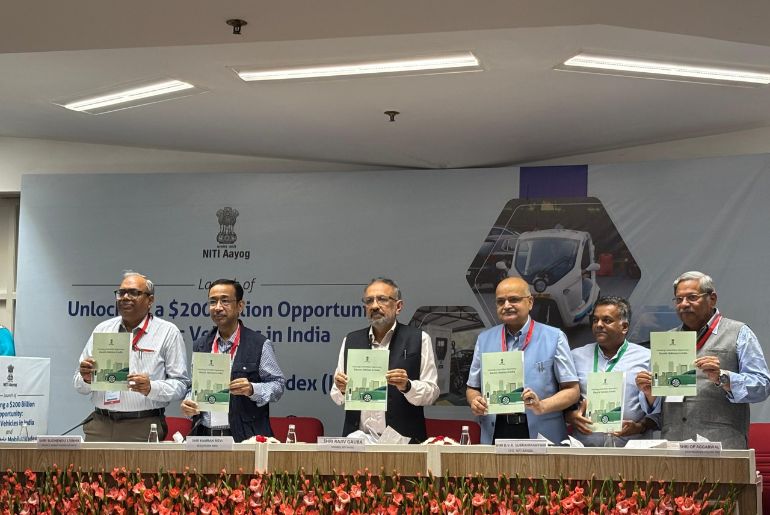The India Electric Mobility Index (IEMI), a first-of-its-kind instrument created by NITI Aayog, is intended to monitor the progress made by states and Union Territories towards their electric mobility objectives. The index uses 16 measures divided into three main areas—how many electric vehicles (EVs) are in use, how good the charging network is, and how strong local EV research and technology are—to give each state and Union Territory a score out of 100.
The goal is to draw attention to what is effective, promote healthy competition, and identify areas that require improvement. The tool aims to assist policymakers in making informed decisions and advocating for specific changes when necessary. The CEO of NITI Aayog, BVR Subrahmanyam, stated, “This index is just another attempt by NITI Aayog to move India closer to a decarbonised, energy-secure future.” “It also demonstrates how crucial it is for states to cooperate and improve their planning.”
The score was part of new research published by NITI Aayog called “Unlocking a $200 Billion Opportunity: Electric Vehicles in India“. The research explores the issues that the EV industry is now facing and identifies important tactics to hasten the transition to electric mobility.
By 2030, EVs are expected to account for 30% of all vehicle sales in India. Globally, EV sales have increased from 918,000 to about 19 million, while domestic sales have increased from just 50,000 in 2016 to over 2 million in 2024. By 2024, India’s EV penetration rate had increased from just one-fifth of the global average in 2020 to more than two-fifths.
To advance the nation’s EV aspirations, the new report provides a roadmap for what must be done, from removing obstacles to promoting innovation. “India is about to undergo a significant change in our approach,” stated Rajiv Gauba, NITI Aayog member. “To help overcome obstacles and scale up quickly, this report lays out some really practical and policy-aligned steps.”

